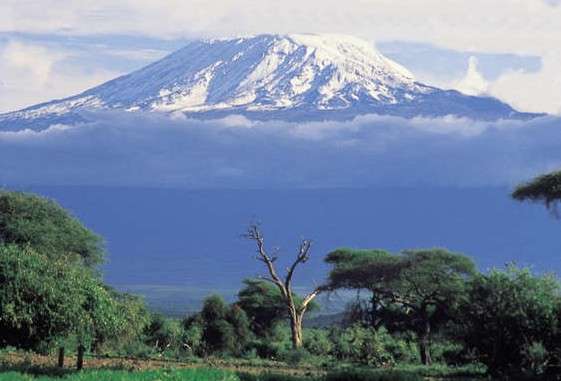Tanzanian coffee
Tanzanian coffee is a kind of Central / East African water-washed (wet-treated) coffee beans, which is characterized by bright acidity and wild flavor. Kenyan coffee is undoubtedly the best coffee of this kind. Garden beans are usually singled out and sold at a higher price, but their performance in the cup is often unsatisfactory, making people feel that it is not worth it. Tanzania green beans, as a new type of coffee beans, sell very well in the United States, so many roasters have accepted this reality. Indeed, Tanzanian coffee has great potential, but it often misses the expression period of the best flavor because of the long transportation process. Because the coffee industry in Tanzania does not have the same infrastructure as Kenya, it is very possible that coffee beans have become old beans in containers on the way to the port. I can often brew the perfect flavor of this kind of coffee, but the aged beans have completely lost their flavor for a few years. So please keep in mind that if there is a newly arrived Tanzanian coffee on the supply list, it will make me very excited, because this batch of coffee must be very good. Mt in northern Tanzania. Good Tanzanian coffee is produced in the Kilimanjaro,Moshi and Mbeya areas, as well as in the Sogea area near the Ruvuma River and the Ruvuma basin in the south.

Map of Tanzania

Ruvuma area, Songea City

Kilimanjaro, Mt.
Coffee Manor:
Total =?
90% of small farmers
10% plantation
Harvest time:
October to February of the following year
Coffee practitioners:
270000 people
Grade,
Handling method:
AA (14%)
A (24%)
The lowest grade is HP, which is produced at low altitude and has many defective beans.
To plant in the shade:
Mixed planting: coffee and banana are mixed to grow in the shade of banana trees.
Organic certification:
Uncertified: small coffee plantations use coffee as a cash crop, cattle and sheep provide it with natural fertilizer, and the industry uses it as food.
Major coffee growing areas:
Moshi area: Mt. Periphery of Kilimanjaro area
Arusha: Meru
Oldeani.
Pare: highland between Lake Nyassa and Taganyika, Songea-Ruvuma (south to Lake Malawi)
Output ranking:
Africa No. 8
World No. 24
Type of planting:
Kents
Bourbon, Typica/Nyara, Blue Mountain
Introduction time:
In 1893 Jesuit missionaries introduced the Arabica bourbon species; Ken introduced planting in 1920.
Recent planting evaluation:
The coffee cups made in Songea are well-behaved, reflecting the common characteristics of "northern" coffee. However, the coffee produced by Kibo has lost this characteristic because of the loss of flavor during transportation. Songea tastes clear and unrestrained, although it is still slightly more relaxed and mild than Kenyan coffee. This season, Nkoanekoli and Ngorongoro have also joined the ranks of coffee cultivation, which represents the development of coffee cultivation in other regions. However, there is a place where the coffee is stale and tasteless, with no performance in the cup. We have tested some garden beans, and they all have obvious "transportation problems", that is, the flavor of coffee beans has been lost in the course of transportation. But the problem is that although Tanzania is aware of the problem and has paid extra for it, the quality of coffee beans has not improved. So what can we do to encourage people to make mistakes and try their best to prevent the quality defects of coffee beans caused by transportation, so that their flavor can be better reflected?
Important Notice :
前街咖啡 FrontStreet Coffee has moved to new addredd:
FrontStreet Coffee Address: 315,Donghua East Road,GuangZhou
Tel:020 38364473
- Prev

On the special language of Espresso
The term "Single:Espresso" refers to brewing a cup of Espresso from a single portion of coffee beans (about 7g-9g). * the term "Double:Espresso" refers to the brewing of Espresso from a double portion of coffee beans (about 14g-18g). * Triple:Espresso refers to brewing a cup of Espresso out of three times the amount of coffee beans (about 21g27g).
- Next

Coffee, liqueur, frozen cheese
Soak the gelatin slices in cold water for 5-10 minutes and set aside. Use a press or coffee maker to extract 150ml coffee solution. Cut the cheese into small pieces and mix with sugar. Beat until soft with an egg beater. Add Bailey liqueur and coffee liquid. Add cream and sugar, pour into the mold, refrigerate until solidified. Http://www.520kfw.com/
Related
- Beginners will see the "Coffee pull flower" guide!
- What is the difference between ice blog purified milk and ordinary milk coffee?
- Why is the Philippines the largest producer of crops in Liberia?
- For coffee extraction, should the fine powder be retained?
- How does extracted espresso fill pressed powder? How much strength does it take to press the powder?
- How to make jasmine cold extract coffee? Is the jasmine + latte good?
- Will this little toy really make the coffee taste better? How does Lily Drip affect coffee extraction?
- Will the action of slapping the filter cup also affect coffee extraction?
- What's the difference between powder-to-water ratio and powder-to-liquid ratio?
- What is the Ethiopian local species? What does it have to do with Heirloom native species?

